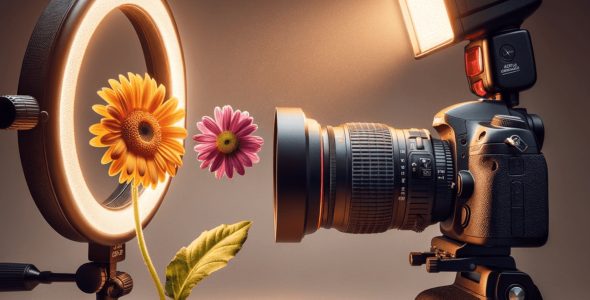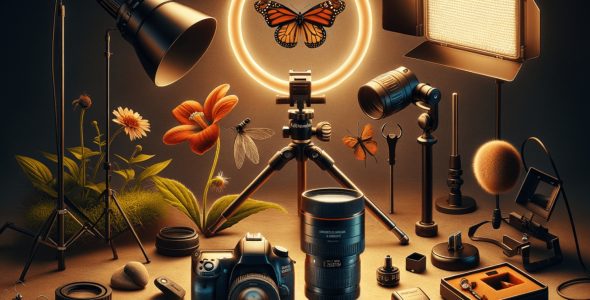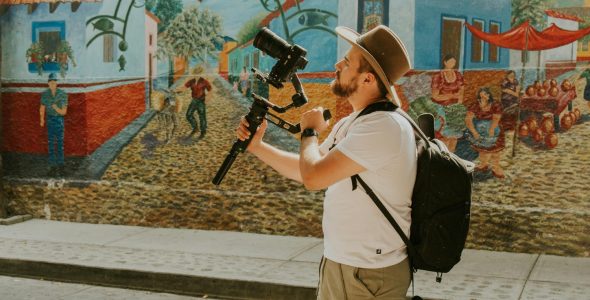Introduction
Flowers have always been a favorite subject for photographers, but macro photography offers a whole new level of appreciation for their beauty. Through close-up shots, you can capture the delicate textures, vibrant colors, and intricate details of flowers that are often overlooked by the naked eye. Here’s how to effectively capture the intricate details of flowers in macro photography, creating images that reveal the true elegance of these natural wonders.
- Choosing the Right Lens
The first step in capturing the fine details of flowers is selecting the right equipment. A macro lens is essential for achieving those close-up shots that highlight textures and minute details. These lenses allow you to focus on tiny areas while maintaining sharpness and clarity. A 100mm macro lens is a popular choice for flower photography, as it offers a reasonable working distance and excellent magnification without disturbing the delicate petals. You can also experiment with extension tubes or close-up filters if you don’t have a dedicated macro lens. - Focus on Key Details
When photographing flowers, it’s essential to determine which specific details to emphasize. The beauty of macro photography lies in capturing the textures and patterns that are invisible to the naked eye at typical viewing distances. You can focus on the intricate petals, the stamens and pistils, or the dewdrops on the surface of the flower. These tiny elements can reveal the true beauty of the flower and add depth to the composition. For example, capturing the fine lines and color gradients on a petal or the tiny hairs on a stamen can add a dramatic effect to your image. - Use Natural Light
Lighting plays a critical role in flower macro photography. Natural light is often the best option, as it softens the textures and brings out the true colors of the flower. Early morning or late afternoon light is ideal because it’s gentle and creates a warm, soft glow. Avoid harsh midday light, as it can cause strong shadows and overexposed highlights. If shooting outdoors, positioning the flower in a location where the light is diffused through clouds or filtered through leaves can help prevent harsh contrasts. - Depth of Field and Focus
In macro photography, depth of field (DOF) can be incredibly shallow, meaning only a small portion of the flower will be in focus. This creates a beautiful effect, but it requires careful control. Aperture settings play a significant role in how much of the flower is in focus. For a softer, more artistic look, use a wide aperture (f/2.8 to f/4) to blur the background and isolate the subject. If you want more of the flower to be in focus, you’ll need to use a narrower aperture (f/8 to f/16). However, be cautious of diffraction, which can reduce sharpness at tiny apertures. - Background and Composition
The background of a flower photo can either enhance or distract from the subject. In macro photography, the background should ideally be blurred, creating a smooth, out-of-focus backdrop that keeps the attention on the flower itself. Bokeh, the blurry background effect produced by out-of-focus light points, can add a dreamy, soft aesthetic to your image. To ensure a clean background, try using a wide aperture and focusing on the flower from an angle that minimizes distractions. Alternatively, you can choose a complementary background, such as soft greenery, that enhances the color and composition of the flower. - Stabilization and Tripods
When working with macro photography, camera stability is key to achieving sharp images. Even the slightest movement can result in blur, so using a tripod is essential, especially when shooting at high magnifications. A tripod helps keep the camera steady, allowing you to focus on composition and light. Additionally, use a remote shutter release or self-timer to avoid camera shake when pressing the shutter.
Conclusion
Macro photography allows you to reveal the hidden world of flowers, showcasing their intricate beauty and stunning details. By selecting the right lens, focusing on key elements, utilizing natural light, and mastering your camera settings, you can create striking images that highlight the textures, colors, and patterns of flowers. Whether you’re capturing a single petal or the delicate stamens, macro photography transforms flowers into breathtaking works of art that reflect the true essence of nature.
#MacroPhotography #FlowerPhotography #PhotographyTips #CloseUpPhotography #NaturePhotography #PhotographyInspiration #FlowerDetails #FloralArt #PhotographyTechniques #MacroLens

 My Account
My Account 


